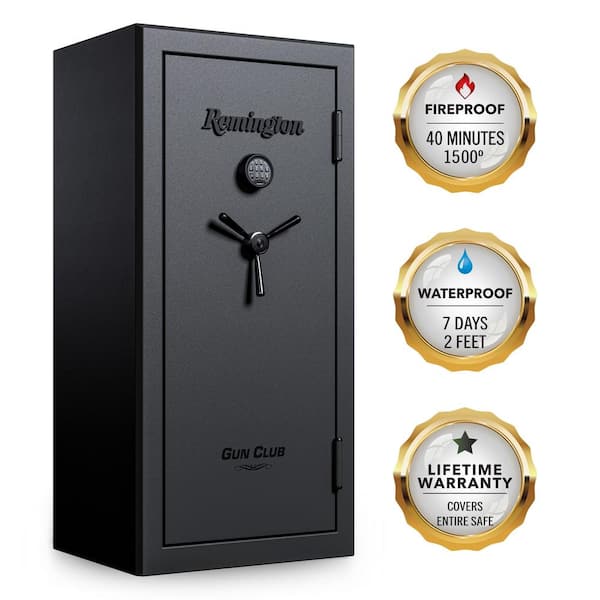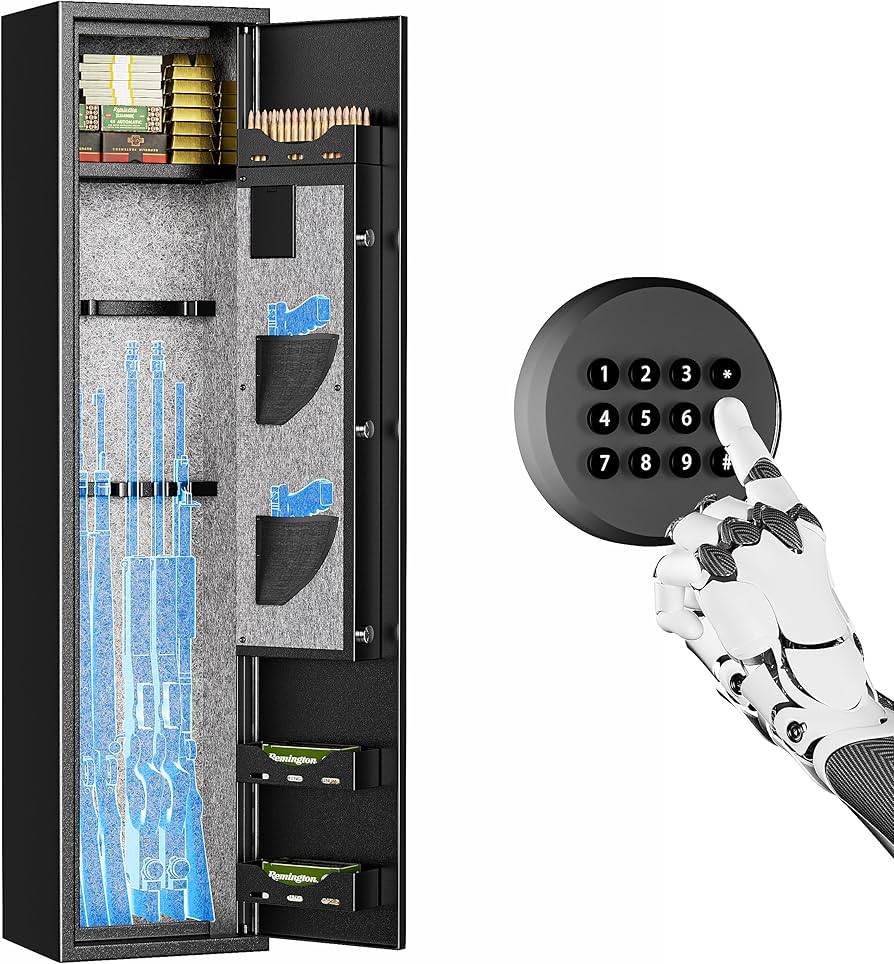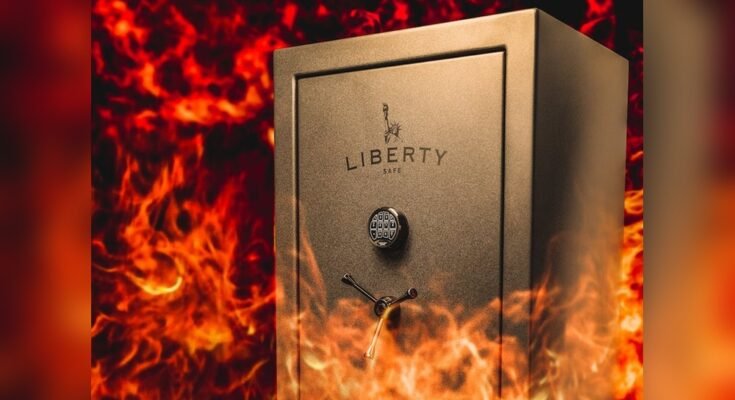Are you worried about protecting your rifles from fire damage? You’ve probably heard about fireproof rifle safes, but do they really work when it matters most?
You want to keep your firearms safe, secure, and intact no matter what happens. You’ll discover how these safes perform under real fire conditions, what features to look for, and whether investing in one is truly worth your money. Keep reading to find out if a fireproof rifle safe is the right choice for protecting your valuable firearms.

Fireproof Safes Explained
Fireproof rifle safes offer protection beyond just securing firearms. They guard important items against fire damage. Understanding how these safes work helps you choose the right one. The materials and design play a key role in fire resistance. Different safes can handle various heat levels for specific times. Knowing these details clarifies what fireproof safes can really do.
How Fireproofing Works
Fireproof safes use special insulation to block heat. This insulation slows heat transfer to the safe’s interior. It keeps the inside cool enough to protect contents. The safe’s outer layer resists flames and high temperatures. Doors and seals also prevent smoke and heat entry. The combination creates a barrier against fire damage.
Types Of Fireproof Materials
Common materials include gypsum, concrete, and ceramic. Gypsum absorbs heat and releases moisture to cool the safe. Concrete provides strong heat resistance and durability. Ceramic materials can withstand very high temperatures. Many safes use a mix of these materials. Each material adds to the overall fire protection.
Temperature Ratings And Standards
Fireproof safes come with temperature ratings. These ratings show the highest heat the safe can handle. Most safes protect contents up to 1,200°F (649°C) or more. The duration of protection varies, often 30 minutes to 2 hours. Testing follows strict standards like UL 72 or ETL. These tests ensure safes meet fire resistance claims.

Rifle Safes Vs. Regular Safes
Rifle safes and regular safes serve different purposes. Both protect valuables, but their designs vary a lot. Understanding these differences helps you choose the right safe for your needs.
Design Differences
Rifle safes are taller and narrow. They fit long guns like rifles and shotguns. Shelves and racks keep guns organized and easy to access. Regular safes are usually box-shaped. They store documents, jewelry, or small items. These safes often have flat interiors without racks.
Security Features For Rifles
Rifle safes focus on quick access and strong locking systems. Many use biometric locks or combination dials. They protect guns from theft and unauthorized use. Regular safes may have simpler locks. Their main goal is to secure valuables, not quick access.
Impact Of Fireproofing On Safe Size
Fireproofing adds extra layers to the safe walls. This makes rifle safes thicker and heavier. The added insulation protects guns from high heat. Regular safes also get bigger with fireproofing. But their smaller size means less impact on storage space.
Performance In Real Fires
Fireproof rifle safes promise to protect valuable firearms during a fire. But how do they perform in real fire situations? Understanding their actual performance helps buyers make smart choices. Real fire tests reveal strengths and weaknesses of these safes.
Fire Testing Procedures
Fireproof safes undergo strict testing before sale. They face high heat for set times, often 30 to 90 minutes. Testing labs use controlled fires to measure temperature inside the safe. The goal is to keep internal heat below 350°F. This temperature protects gun finishes and gunpowder. Some safes also test for water damage after fire. Tests help show if safes meet fire-resistance claims.
Common Failure Points
Not all safes perform perfectly in fires. Doors often fail to seal tightly under heat. Gaps let hot air inside, damaging contents. Locks can warp and jam from heat expansion. Some safes lose fireproof insulation after repeated heating. Water from firefighting can cause rust inside the safe. Poor-quality safes may crack or break under heat stress. These weak points reduce safe effectiveness in real fires.
User Experiences And Case Studies
Many gun owners share their stories after house fires. Some report safes kept guns safe and dry. Others say guns were damaged or lost despite fireproof ratings. Case studies show that installation also matters. Safes placed near walls or flammable items face more risk. User reports highlight the importance of buying tested, reliable safes. Real-life experience adds valuable insight beyond lab tests.

Choosing The Right Fireproof Rifle Safe
Choosing the right fireproof rifle safe is important for protecting your guns. A good safe keeps your rifles safe from fire and theft. Not all safes are the same. Some offer better fire protection, while others focus more on stopping thieves.
Finding the right balance helps protect your valuables without overspending. Think about how you use the safe and what risks you face. This helps you pick a safe that fits your needs well.
Evaluating Fire Ratings
Fire ratings show how long a safe can protect contents from heat. Look for safes with a high fire rating. The rating tells you the temperature and time the safe can handle. For rifles, choose safes with at least 1 hour of fire protection. This helps prevent damage during a house fire.
Balancing Fire And Theft Protection
Fireproof safes also need strong locks and solid construction. These features stop thieves from breaking in. Some safes focus more on fire resistance, others on security. Pick a safe that offers both. It keeps your rifles safe from fire and theft at the same time.
Budget Considerations
Fireproof rifle safes come in many price ranges. Higher prices usually mean better protection. Set a budget before shopping. Find a safe that fits your budget but still offers good fire and theft protection. Spending a little more can save your rifles and money later.
Maintenance And Best Practices
Maintaining your fireproof rifle safe is key to keeping it effective. Simple actions help protect your firearms and valuables better. Regular care ensures the safe works well during emergencies. Follow these best practices to get the most from your investment.
Regular Inspection Tips
Check the safe’s seals for cracks or damage. Test the lock and hinges monthly to ensure smooth operation. Clean the interior to avoid moisture buildup. Look for rust or corrosion signs and treat them immediately. Keep batteries fresh if your safe uses electronic locks.
Proper Placement Of The Safe
Place the safe away from direct sunlight and heat sources. Avoid damp or humid areas to prevent moisture damage. A sturdy, level surface is best for stability. Keep it hidden but accessible for quick access. Position it where smoke alarms or sprinklers can reach.
Additional Fire Protection Measures
Use fire-resistant mats or blankets under and around the safe. Install smoke detectors nearby for early warning. Consider a fire extinguisher close to the safe area. Avoid storing flammable materials near the safe. Regularly update your fire safety plan for your home.
Frequently Asked Questions
Do Fireproof Rifle Safes Protect Against High Temperatures?
Yes, fireproof rifle safes are designed to withstand extreme heat. They protect firearms and valuables from fire damage for specified durations. However, the level of protection depends on the safe’s fire rating and construction materials.
How Long Can Fireproof Safes Resist Fire?
Fireproof safes typically resist fire from 30 minutes to 2 hours. The exact duration depends on the safe’s certification and fireproof rating. Longer resistance means better protection for your rifles during a fire emergency.
Are Fireproof Rifle Safes Also Waterproof?
Many fireproof rifle safes offer waterproof protection, but not all. Waterproof safes prevent water damage from fire hoses or floods. Always check the product specifications to ensure it meets both fire and water protection standards.
Can Fireproof Safes Prevent Theft?
Fireproof safes provide basic theft deterrence but are primarily for fire protection. For high security against theft, look for safes with robust locking mechanisms and solid steel construction. Combining fireproof and security features is ideal for firearm protection.
Conclusion
Fireproof rifle safes offer strong protection for your firearms. They keep guns safe from fire and theft. Not all safes are the same, so choose one with tested fire ratings. A good safe gives peace of mind during emergencies. Remember, no safe is completely fireproof, but many can resist heat for a time.
Investing in a reliable safe helps protect your valuables. Stay safe and keep your firearms secure with the right fireproof safe.
